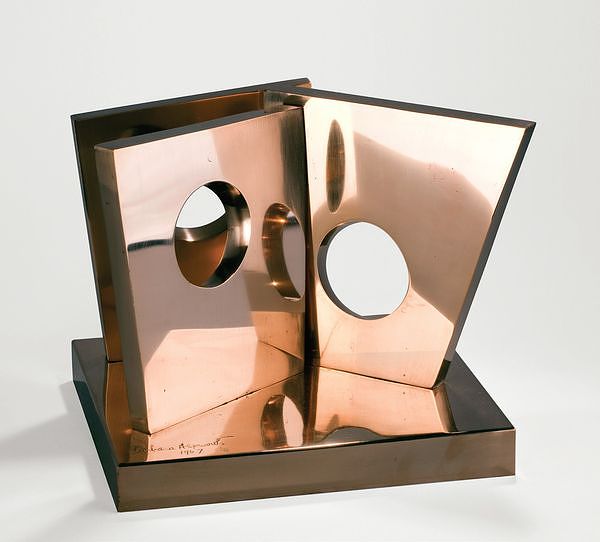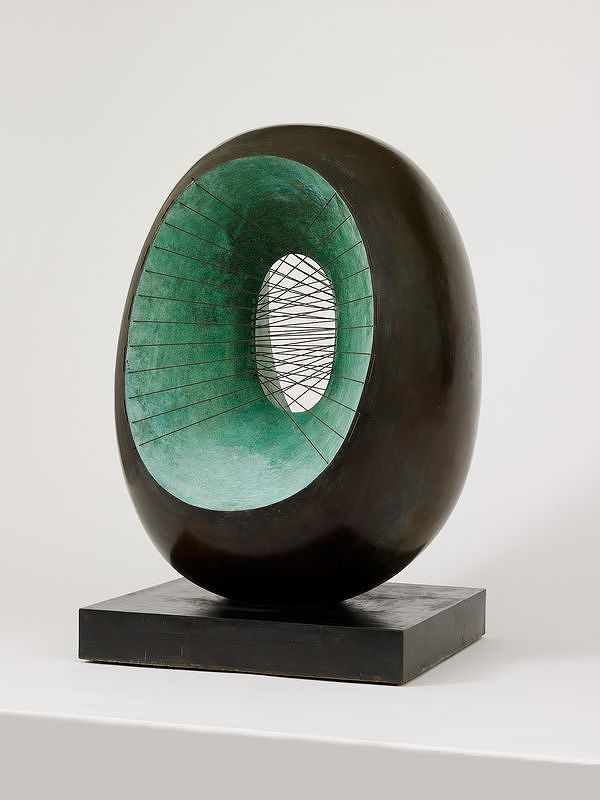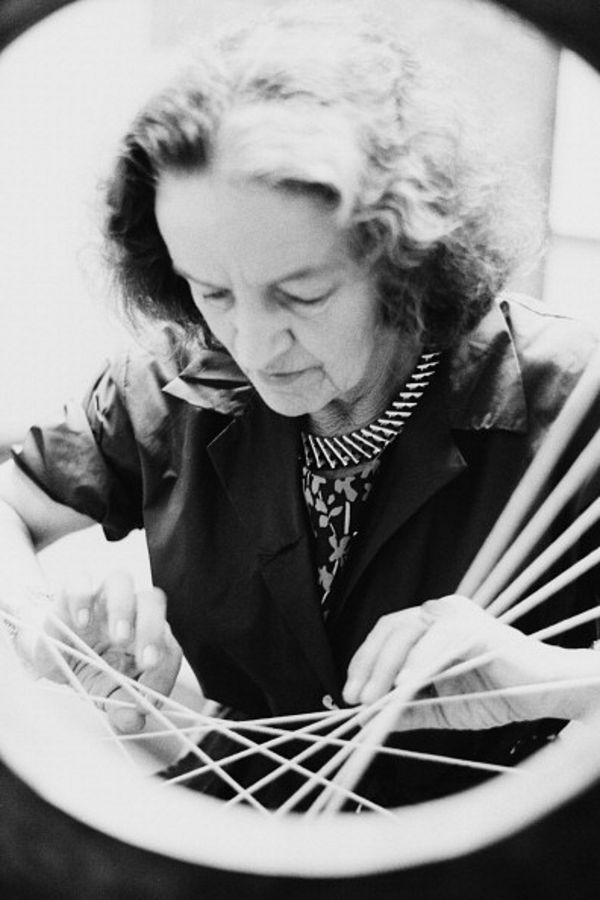Barbara Hepworth © Tony Evans/Timelapse Library Ltd. Getty Images.
Among the most common themes in Dame Barbara Hepworth's oeuvre is her exploration of the human experience and our relation to the natural world. Hepworth sought to encourage viewers to interact with her sculptures, both her famous monumental works as well as her intimate table-top pieces. Eleanor Clayton, curator of The Hepworth Wakefield, explains how this impetus transcended Hepworth's work itself, as, for a major retrospective at London's Tate in 1968, the artist introduced potted plants and handmade concrete plinths throughout the installation — reimagining the expected museological space and reframing the visitor's encounter with her work.
It was at the height of her professional success that Hepworth encountered the pangs of failing health. By 1972, Hepworth was spurred by increasingly vicious throat and mouth cancer and produced work at a feverish rate. Unfazed by her unfortunes, Hepworth discovered new modes of expression and materials that would cement her legacy within art history.

Barbara Hepworth Three Oblique Forms, (February), 1967. Polished bronze.
Three Oblique Forms (February), a bronze form cast from a plaster prototype in 1967, is one such table-top sculpture comprised of three slanted entities that connect in the middle. By giving the sculpture a mirror-like finish, the holes are reflected on other sections of the work, providing endless perspectives. Here, Hepworth inspires the onlooker to ponder the act of sculpture in a different way: not as the production of inanimate objects but as the expression and embodiment of actual moments in time, feelings, thoughts and ideas that relate to nature and the world around us. In tandem with the particular shape of this form, the reflective quality of the bronze, a material Hepworth used much more frequently during her 1965-1975 phase, creates a uniquely dynamic experience between object and viewer.
The visual lyricism of her late sculptures is a testament to the artist's evocative manipulation of materials.

Barbara Hepworth Spring, 1965, cast 1966. Bronze with strings. Hepworth Estate, on long loan to The Hepworth Wakefield (Wakefield Permanent Art Collection). Arts Council Collection, Southbank Centre, London © Bowness, Hepworth Estate
With Spring, a bronze-cast ovular shape mounted on a thin square platform, the egg-like form is juxtaposed by the tense elements of the strings that cut through its light green centre. This contrast between hard and soft, curve and line, solid and void is quintessential of the abstraction first explored by Hepworth in the 1930s and later perfected during the final stages of her life. As Phillips’ Peter Sumner remarks in his reflection on the artist, it was this final period of her career when Hepworth revisited "themes and techniques from earlier sculptures" and drew upon her four decades of experience — at this point, with a richer and more diverse materiality. The success she achieved with monumental public commissions earlier in life allowed for a freedom and flexibility in pursuing the expressive qualities of sculpture.

Barbara Hepworth Two Turning Forms, 1972. Marble.
Completed only three years before her death, Two Turning Forms boasts all the distinguished characteristics that have made Hepworth one of the twentieth century's most influential British artists. Placed on a minimalistic platform, the white marble figures are vertically dominant, bold and assertive, and exude an intense sense of negative space. A tender and pure notion is expressed through the difference in sizes of the two marble elements, suggesting a familial relation between them.
This notion is repeated in other works from the same period such as Mother and Child (1972). During this time, Hepworth produced several sculptures composed of more than one part: she used an abstract language to represent the relationship between one person and another. The two forms can be moved around to change the whole composition of the piece. Hepworth encouraged engagement from the spectator and believed that a sculpture must be touched to be truly experienced.
For Hepworth, the world was always changing and needed to be confronted, and so in her work she embraced the transience of life and incorporated it into her diverse and exciting sculptures. The visual lyricism of these late sculptures is a testament to the artist's evocative manipulation of materials.
